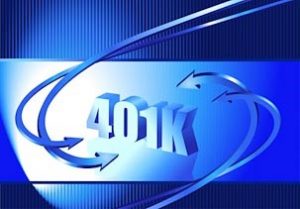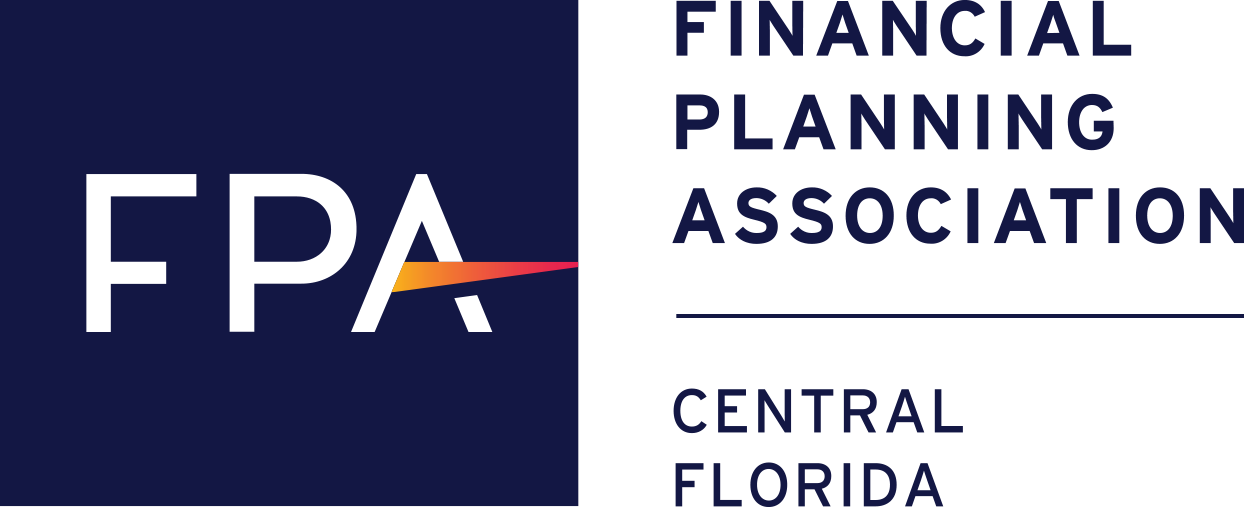
Your 401(k) and Prudently Managing It

Slowly but surely over the past several decades, the 401(k) retirement plan, which puts the responsibility for building a retirement nest egg on workers, typically without much help from their employers, has supplanted the traditional pension plan to become the most widely used private-sector employer-sponsored retirement plan in the U.S. Today, an estimated 55 million American workers participate in 401(k) plans, with assets totaling $4.6 trillion.
Despite the growing prevalence of 401(k)s in the U.S. workplace, employees apparently aren’t entirely comfortable with the responsibility of amassing and managing their own retirement savings accounts. Indeed, among 401(k) plan participants surveyed in 2016 by the investment firm Charles Schwab, a majority, 56%, said they are either “somewhat confident or “not very confident” about making plan decisions on their own. That lack of confidence explains in part why survey participants named “saving enough for a comfortable retirement” as their top source of financial stress.
With a stronger grasp of how to manage a 401(k) comes relief from some of that financial stress. Here personal finance experts from the Financial Planning Association provide their keys to getting the most out of a 401(k) plan.
Get familiar with the plan your employer offers. “I think one of the first steps to better managing your 401(k) is getting a good understanding of how your company's 401(k) works,” says New York City-based Certified Financial Planner™ Roger Ma. 401(k) plans can differ widely from employer to employer, in such areas as:
The range and type of investment options offered to participants, and the fees attached to those options.
Whether the employer will match employee contributions and if so, the extent and timing of those matching contributions.
The schedule under which employees become vested in the plan.
The professional support the employer and/or the 401(k) plan administrator offer to participants who want guidance and advice in handling their plan.
These are some of the key moving parts with which employees need to be familiar in order to manage their 401(k). For details, ask a person who handles employee benefits within your company or organization.
Contribute early, consistently and to the maximum allowed by tax law, if possible. “It’s important to contribute, and to start contributing early, even if it’s a small amount,” says Jessica O’Donnell, a Massachusetts-based Certified Financial Planner™ with Summit Financial Strategies.
The more money that’s inside a 401(k), and the longer that money stays in the account, the better positioned you will be to reap the benefits of investment growth. The annual contribution limit for employees who participate in a 401(k) is $18,000 in 2016. That threshold is set by the IRS and may fluctuate from year to year. Under what’s known as the “catch-up provision,” employees age 50 and over can contribute an additional $6,000 above the maximum, ostensibly to make up for any lost ground in their retirement savings.
Automate. Automating certain 401(k) functions not only reduces the time it takes to manage your plan, it also increases the likelihood you’ll remain committed to saving, says Driscoll. Most 401(k) plans allow participants to establish an automatic payroll deduction, where a specified amount is diverted from each paycheck, into the retirement plan. Financial professionals also recommend setting up an automatic contribution increase, so that a person’s contribution amount will escalate automatically by a percentage or amount chosen by the plan participant, on a specified date (1% annually, each Jan. 1, for example).
If an employer offers to match contributions, take advantage. “A bare minimum goal is to receive the maximum employer match at all times,” asserts Steve M. Burkett CFP™ of Palisade Investments in Bothell, WA. Often the key to unlocking employer matching contributions is reaching a certain contribution threshold, such as 6% of one’s salary, for instance. “Ask about how the match is calculated to ensure you receive the maximum,” he suggests. “For example, if the employer match is 50% of the first 6% [of annual salary] deferred, you will be missing out unless you defer at least 6%” of your salary.
Also be aware that some employers match by pay period and others at year-end, notes Ma. What’s more, some 401k plans immediately vest employees in matching contributions, while others vest only after an employee works for the company for a specified period of time.
Ma also points out that some company matching contributions to employee 401(k)s come in the form of company stock. Be wary of owning too much stock in the company that also employs you, he warns, because that may “leave the employee overexposed to one company. That is, their job and their retirement monies are all exposed to the same company. If something unfortunate were to happen, like in the case of WorldCom or Enron, they could lose everything.”
A better alternative, he says, may be to liquidate at least some of that company stock held by the plan, using the proceeds to invest in a well-diversified mutual fund inside the plan.
Diversify: Having an appropriately balanced mix of assets inside a 401(k), including stocks, bonds, cash and other types of assets, helps protect a person’s retirement portfolio from volatility (wild swings in value) and may cushion the impact of a major stock market decline, according to financial professionals. The goal of diversifying is to give a portfolio a smoother, more predictable ride. “Really it’s about not putting all your eggs in one basket,” O’Donnell explains. Beyond stocks and bonds, she recommends considering investing some 401(k) plan holdings in other asset classes, such as real estate, via a vehicle like a real estate investment trust.
Choose funds wisely. Determining the right mix — the appropriate investment proportions within a diversified portfolio — depends on a person’s circumstances, priorities and mindset (their risk profile).
A financial professional can help develop a risk profile and select 401(k) investments accordingly. That financial professional could work for the 401(k) provider, or could your own advisor. To find a Certified Financial Planner™ in your area, search the Financial Planning Association’s national database of personal finance experts at www.PlannerSearch.org.
Once you have a clear idea of the appropriate proportion of stocks, bonds and other asset classes to hold inside the 401(k), then it’s a matter of choosing the specific vehicles in which to invest, such as mutual funds, exchange-traded funds (ETFs), and the like.
Also consider the role you want to play in managing 401(k) investments. If you’re more of a hands-off type of investor, as many people are, then a target-date fund or model investment portfolio (with pre-selected funds) might make the most sense, as they take much of the decision-making out of the individual investor’s hands and instead run largely on auto-pilot. Other more hands-on 401(k) participants might prefer to do the research and choose their own investments from among those offered by the plan.
Pay close attention to fees. Fees are a major factor to consider in evaluating specific funds. “It comes down to value,” explains O’Donnell. That means weighing the performance of the fund relative to the fees it charges to investors. Ma notes that, based on historic performance data, it’s worth considering investing in lower-fee passively managed funds (such as index funds) instead of actively managed mutual funds, whose performance may not justify the higher fees and expenses they often charge to investors.
Give preference to lower cost fund choices, recommends Igor Tiguy, a Certified Financial Planner™ at Twelve Points Wealth Management in Concord, MA. “As most actively managed stock funds do not outperform their passively managed benchmarks, you can lower portfolio costs by choosing mostly stock index funds. On the other hand, as many bond and alternative funds beat their benchmarks, it may be worth to pay a bit more within these asset classes.”
Designate beneficiaries and keep them up-to-date. Among a person’s first responsibilities upon enrolling in a 401(k) is to name beneficiaries: the person or people to whom assets in the plan will transfer should the plan owner die. Most plans ask participants to name primary and secondary beneficiaries. Be sure to update beneficiaries as your circumstances change (marital status, having a child, etc.)
Revisit and rebalance 401(k) assets as necessary. On an annual basis, be sure to take stock of any new investment choices offered by the 401(k) plan, says O’Donnell, and to assess whether assets inside the plan need to be rebalanced (reallocated) in order to maintain the desired balance/ level of diversification, as that balance tends to shift over time as the value of individual investments fluctuate.
Consider a Roth 401(k). A Roth 401(k) allows participants to contribute after-tax dollars, and withdraw them in retirement on a tax-free basis. Essentially that money is taxed on the front end rather than the back end, the opposite of a traditional 401(k). For tax diversification, consider putting a portion of your money in a Roth 401(k), suggests Burkett, who notes that a Roth “can be appealing to younger savers whose tax brackets are likely to go up in the future.”
Be a patient, not a panicked, investor. Remember, you’re in this for the long haul. Resist the urge to convert 401(k) investments to cash during a market downturn, suggests O’Donnell, because that locks in losses when, with a little patience, those investments likely would regain their lost value.
December 2016 — This column is provided by the Financial Planning Association® (FPA®) of Central Florida, the principle professional organization for Certified Financial PlannerTM (CFP®) professionals. FPA is the community that fosters the value of financial planning and advances the financial planning profession and its members demonstrate and support a professional commitment to education and a client-centered financial planning process. Please credit FPA of Central Florida if you use this column in whole or in part.
The Financial Planning Association is the owner of trademark, service mark and collective membership mark rights in: FPA, FPA/Logo and FINANCIAL PLANNING ASSOCIATION. The marks may not be used without written permission from the Financial Planning Association.
